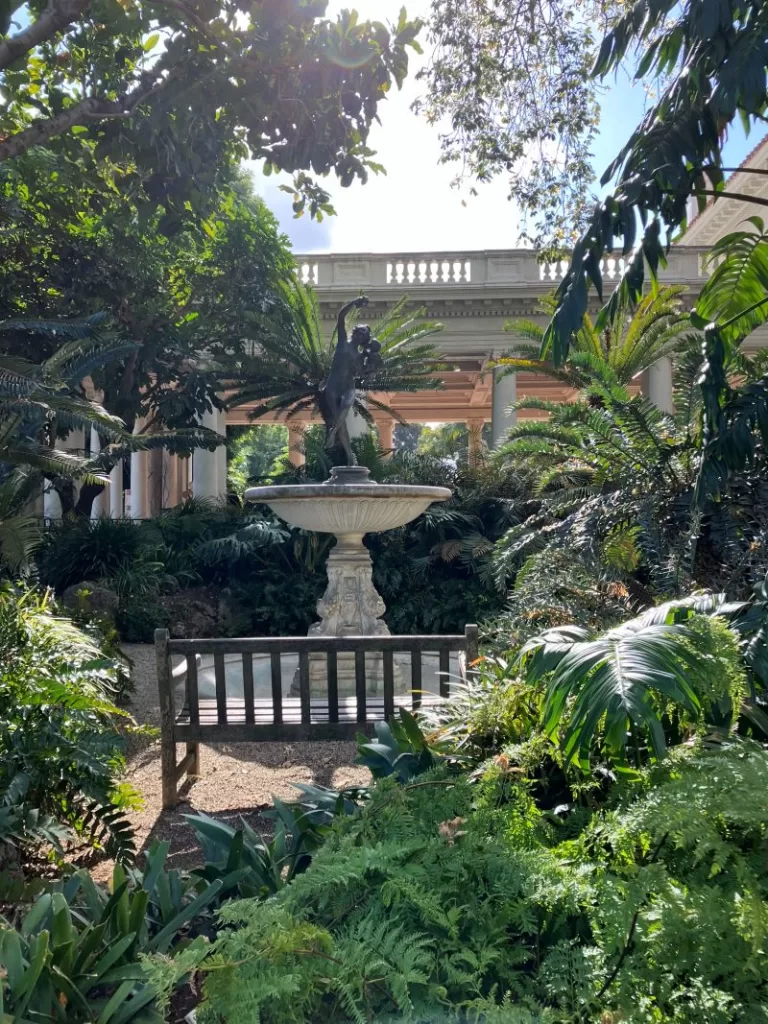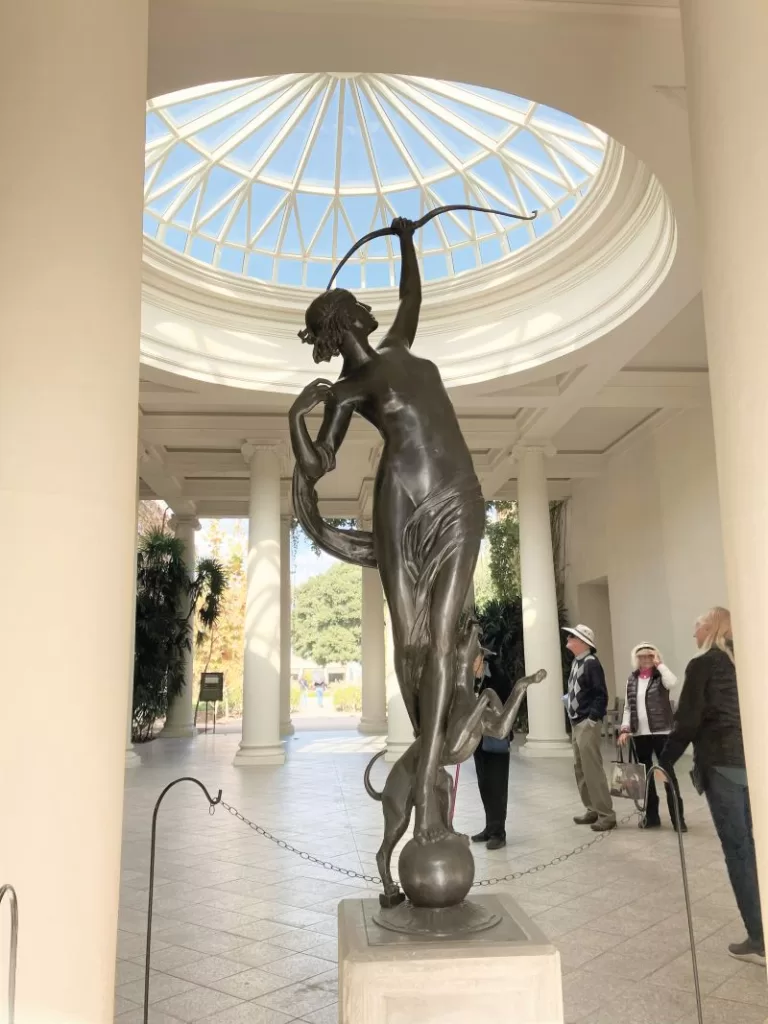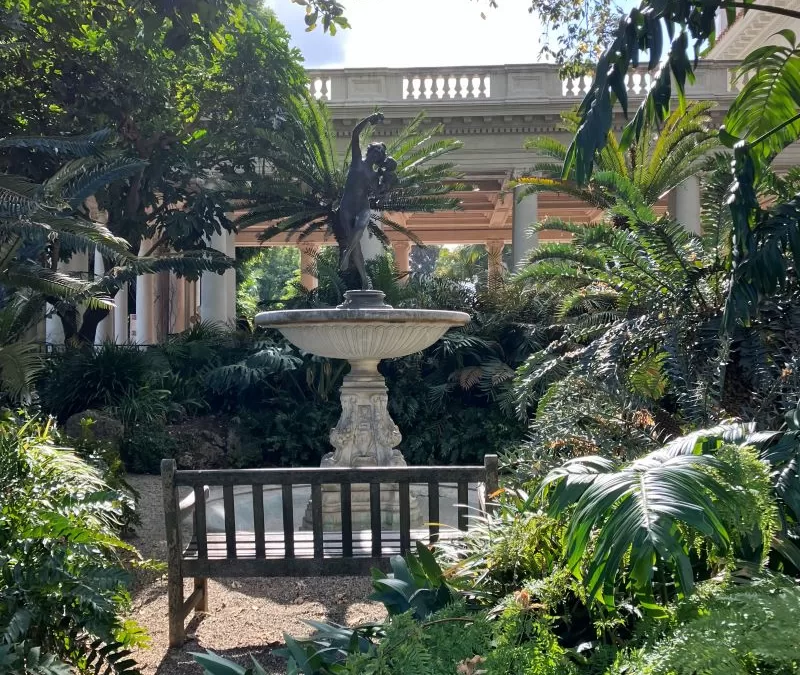

School’s out for summer and many of us are looking for a fun activity to entertain children, visiting relatives, or a date. As we make our way towards the solstice, summer is on the horizon, and it presents an excellent opportunity to spend time with loved ones while enjoying some history. Of the many sights in the Los Angeles area, The Huntington Library, Art Museum, and Botanical Gardens property provides an especially enjoyable day out, between its gardens, museum, and library.
The 207-acre property that is home to the Huntington was the estate built by railroad magnate Henry E. Huntington on the original 600-acre San Marino Ranch. Influential in growing regions of southern California, Huntington was the president of the Pacific Electric Railway Company, and assisted in developing public transportation throughout the area.
The Huntington’s world-class research library boasts one of the most impressive collections of written and printed material anywhere. It’s one of the most important independent research libraries in the world, with more than 11 million items spanning the 11th to the 21st century.
Treasures housed in the library include manuscript drafts of transcendentalist Henry David Thoreau’s Walden, self-annotated first-edition copies of Sir Isaac Newton’s 1687 Principia, and one of the last 12 surviving vellum editions of the Gutenberg Bible—one of only three in the United States.
The library houses one of only two known copies of the first quarto of Hamlet, and also hosts the manuscript of Benjamin Franklin’s autobiography. Researchers must apply for access to the library and participate in orientation before accessing materials, but the public is welcome to visit the library’s galleries. Current exhibits include a look at the oldest printed book in the library collection: Scripture of the Great Flower Ornament of the Buddha, printed in 1085.
The Huntington art museum’s best known works are Thomas Gainsborough’s The Blue Boy (1770) and Thomas Lawrence’s Sarah Goodin Barrett Moulton: “Pinkie” (1794), but this jewel of a museum, located within the original Huntington mansion, is home to an extensive permanent collection of art centered around the collection of 18th-century French decorative art established by Henry and Arabella Huntington in the early 20th century. The collection continues to grow. In 2022, the Huntington acquired a major painting by Élisabeth Louise Vigée Le Brun (1755–1842), the most important female artist of 18th-century France. Her painting, Portrait of Joseph Hyacinthe François-de-Paule de Rigaud, comte de Vaudreuil (ca. 1784), was a gift from the Ahmanson Foundation.
The Huntington’s art collections also feature treasures from other eras, including Charles White’s World War II-era Soldier (1944), Edward Burne-Jones’ Portrait of Margaret Mackail, the Artist’s Daughter (1888), and Edward Hopper’s The Long Leg (1935).
The botanical gardens cover 130 acres, and feature living collections of entire plant communities from around the world—more than 83,000 plants, including rare, threatened and endangered species. Behind the scenes is a laboratory for botanical conservation and research.
The themed gardens are favorites with visitors. The Japanese garden features an authentic ceremonial tea house, the Chinese garden is home to a cafe, the children’s garden delights all ages, and the famous rose garden is in full bloom in June.
The famous rose garden tea room reopened in May, following a three-year closure. It offers lavish teas, with vegan and gluten-free options, and a children’s menu, as well as a festive champagne tea menu. Advance reservations are required and can be made online.
Admission to the Huntington is $29 per adult and requires reservations on weekends, with discounts available on weekdays, and for seniors, children, military members, and students. Parking is free, and there are several eateries available on site including a red car-themed coffee shop, harkening back to Huntington’s work with the Pacific Electric Railway, and the 1919 Cafe, recalling the year the institution was founded. A gift shop is available on site as well.
The Huntington is closed on Tuesdays and on holidays, including Juneteenth—June 19. For more information, please visit Huntington.org.
Whether you’re interested in stopping to smell the roses, taking in some historic art, or are just looking for a beautiful place to go for a walk, The Huntington offers plenty to explore. We recommend wearing sunscreen and a hat, and bringing plenty of water. Please remember to take only photos (no flash), not flowers, and to stay on designated paths, whenever you visit. We hope you have fun hunting for fun at the Huntington!





